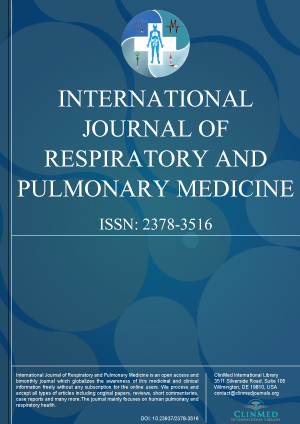Archive
Open Access DOI:10.23937/2378-3516/1410162
Diagnostic Challenges of Binax Urinary EIA for Detection of Legionella pneumophila
Christian Lee, MSc, Heather N Yerdon, BS and Bolaji Akinbola, MD, MSc
Article Type: Case Report | First Published: September 30, 2021
A middle-aged African American male with a history of stage 2 chronic kidney disease status post double kidney transplant was admitted after developing symptoms of respiratory infection during the peak of COVID-19. The patient rapidly developed acute hypoxemic respiratory failure. Differentials for the patient included COVID-19, opportunistic infection such as mycoplasma, and legionella. During the admission, the patient had numerous infectious disease screening tests run including a COVID-19 te...
Article Formats
- Full Article
- XML
- EPub Reader
Open Access DOI:10.23937/2378-3516/1410161
Presence of a Hernia Sac Does Not Impact Lung Perfusion in CDH
Akila B Ramaraj, MD, Guy Jensen, MD, MPH, Bre Anna Kinghorn, MD, MS and Rebecca A Stark, MD
Article Type: Research Article | First Published: September 30, 2021
There are variable long-term pulmonary outcomes of children with congenital diaphragmatic hernia (CDH). Diagnostic modalities evaluating pulmonary function can be limited by patient compliance. Pulmonary perfusion scintigraphy is a diagnostic tool to evaluate lung development in younger children. Presence of a hernia sac is known to correlate with less severe disease but little has been reported on any correlation with lung size and function. The purpose of this study was to evaluate the relatio...
Article Formats
- Full Article
- XML
- EPub Reader
Open Access DOI:10.23937/2378-3516/1410160
Bistees George, BS, BA, Nouman Tanveer, DO and Michael Boyars, MD
Article Type: Case Report | First Published: September 29, 2021
Streptococcus anginosus group (SAG), or milleri group streptococci (MGS), is an uncommon group of bacteria that has been increasingly affecting the adult population. It is an interesting organism in that it is intensely pyogenic when pathogenic-much in the same character as Staphylococcus aureus. SAG includes three species: Streptococcus anginosus, Streptococcus intermedius, and Streptococcus constellatus. Members of the SAG are usually part of the indigenous oral, gastrointestinal, and genitour...
Article Formats
- Full Article
- XML
- EPub Reader

Volume 8
Issue 3
Issue 3
